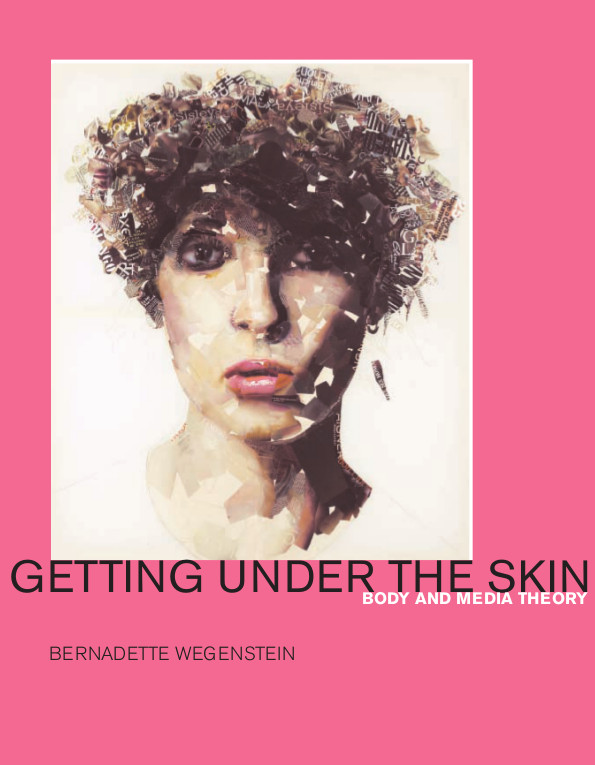Verena Andermatt Conley (ed.): Rethinking Technologies (1993)
Filed under book | Tags: · art, autopoiesis, cyberspace, cyborg, philosophy, philosophy of technology, postmodern, science, technology, virtual reality

Grounded on the assumption that the relationship between the arts and the sciences is dictated by technology, the essays in Rethinking Technologies explore trends in contemporary thought that have been changing our awareness of science, technology, and the arts.
Contributors: Teresa Brennan, Patrick Clancy, Verena Andermatt Conley, Scott Durham, Thierry de Duve, Françoise Gaillard, Félix Guattari, N. Katherine Hayles, Alberto Moreiras, Jean-Luc Nancy, Avital Ronell, Ingrid Scheibler, Paul Virilio.
Edited by Verena Andermatt Conley on behalf of the Miami Theory Collective (Oxford, Ohio)
Publisher University of Minnesota Press, 1993
ISBN 0816622159, 9780816622153
248 pages
PDF (updated on 2012-9-3)
Comment (0)Bernadette Wegenstein: Getting Under the Skin: The Body and Media Theory (2006)
Filed under book | Tags: · body, cyborg, phenomenology, posthumanism, psychoanalysis

The body as an object of critical study dominates disciplines across the humanities to such an extent that a new discipline has emerged: body criticism. In Getting Under the Skin, Bernadette Wegenstein traces contemporary body discourse in philosophy and cultural studies to its roots in twentieth-century thought—showing how psychoanalysis, phenomenology, cognitive science, and feminist theory contributed to a new body concept—and studies the millennial body in performance art, popular culture, new media arts, and architecture.
Wegenstein shows how the concept of bodily fragmentation has been in circulation since the sixteenth century’s investigation of anatomy. The history of the body-in-pieces, she argues, is a history of a struggling relationship between two concepts of the body—as fragmented and as holistic. Wegenstein shows that by the twentieth century these two apparently contradictory movements were integrated; both fragmentation and holism, she argues, are indispensable modes of imagining and configuring the body. The history of the body, therefore, is a history of mediation; but it was not until the turn of the twenty-first century and the digital revolution that the body was best able to show its mediality.
After examining key concepts in body criticism, Wegenstein looks at the body as “raw material” in twentieth-century performance art, medical techniques for visualizing the human body, and strategies in popular culture for “getting under the skin” with images of freely floating body parts. Her analysis of current trends in architecture and new media art demonstrates the deep connection of body criticism to media criticism. In this approach to body criticism, the body no longer stands in for something else—the medium has become the body.
Publisher MIT Press, 2006
ISBN 0262232472, 9780262232470
211 pages
PDF (updated on 2013-1-29)
Comment (0)Donna J Haraway: Simians, Cyborgs, and Women: The Reinvention of Nature (1991–) [EN, ES]
Filed under book | Tags: · animal, body, capitalism, culture, cyberfeminism, cyborg, feminism, gender, nature

“The idea that nature is constructed, not discovered – that truth is made, not found – is the keynote of recent scholarship in the history of science. Tracing the gendered roots of science in culture, Donna Haraway’s writings about scientific research on monkeys and apes is arguably the finest scholarship in this tradition. She has carefully studied the publications, the papers, the correspondence, and the history of the expeditions and institions of primate studies, uncovering the historical construction of the pedigrees for existing social relations – the naturalization of race, sex, and class. Throughout this book she is analysing accounts, narratives, and stories of the creation of nature, living organisms, and cyborgs (cybernetic organisms: systems which embrace organic and technological components). She also looks critically at the immune system as an information system, and shows how deeply our cultural assumptions penetrate into allegedly value-neutral medical research. In several of these essays she explores and develops the contested terms of reference of existing feminist scholarship; and by mapping the fate of two potent and ambiguous worlds – ‘nature’ and ‘experience’ – she uncovers new visions and provides the possibility of a new politics of hope.
Her previous book, Primate Visions, has been called ‘outstanding’, ‘original’, ‘brilliant’, ‘important’ by leading scholars in the field. Simians, Cyborgs, and Women contains ten essays written between 1978 and 1989. They establish her as one of the most thoughtful and challenging feminist writers today.”
Publisher Routledge, New York, 1991
ISBN 1853431397, 9781853431395
287 pages
Simians, Cyborgs, and Women: The Reinvention of Nature (English, 1991, updated on 2012-7-31)
Ciencia, cyborgs y mujeres. La reinvención de la naturaleza (Spanish, trans. Manuel Talens, 1995, added on 2014-3-18)

